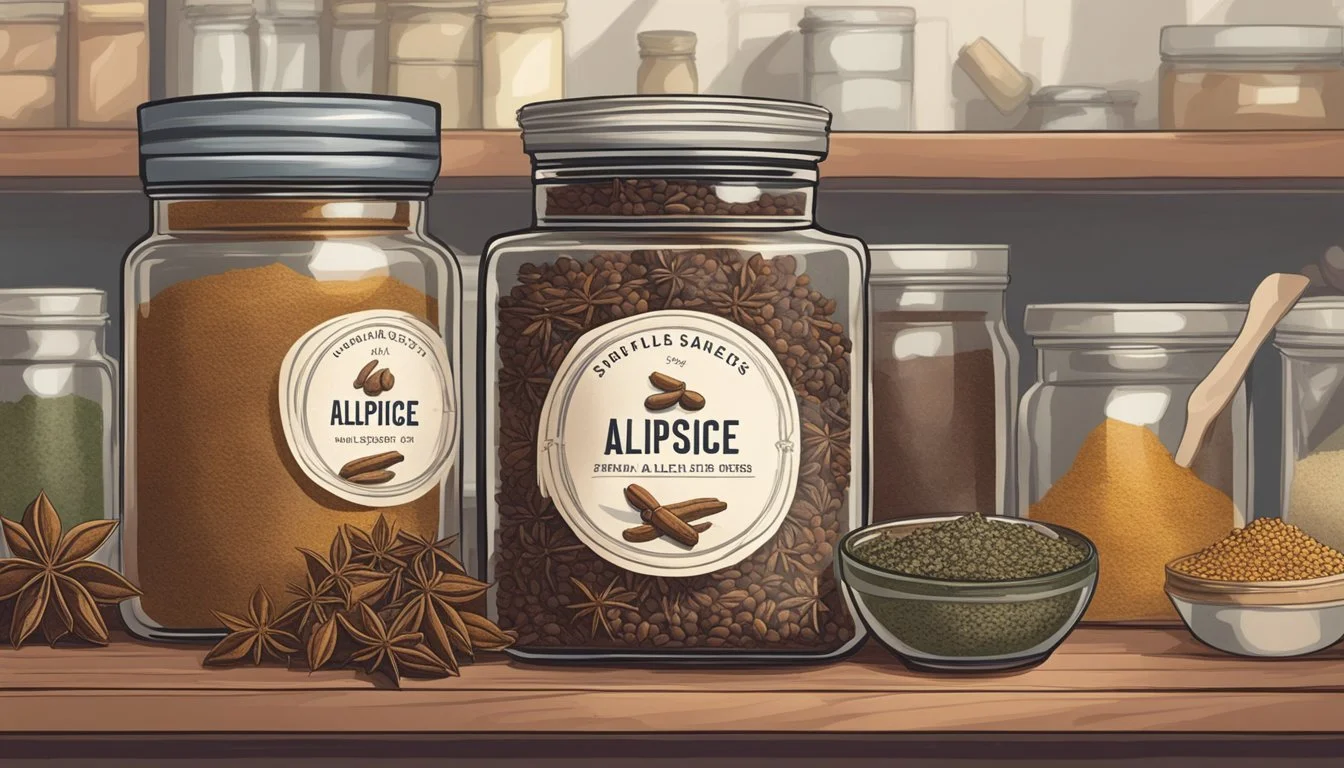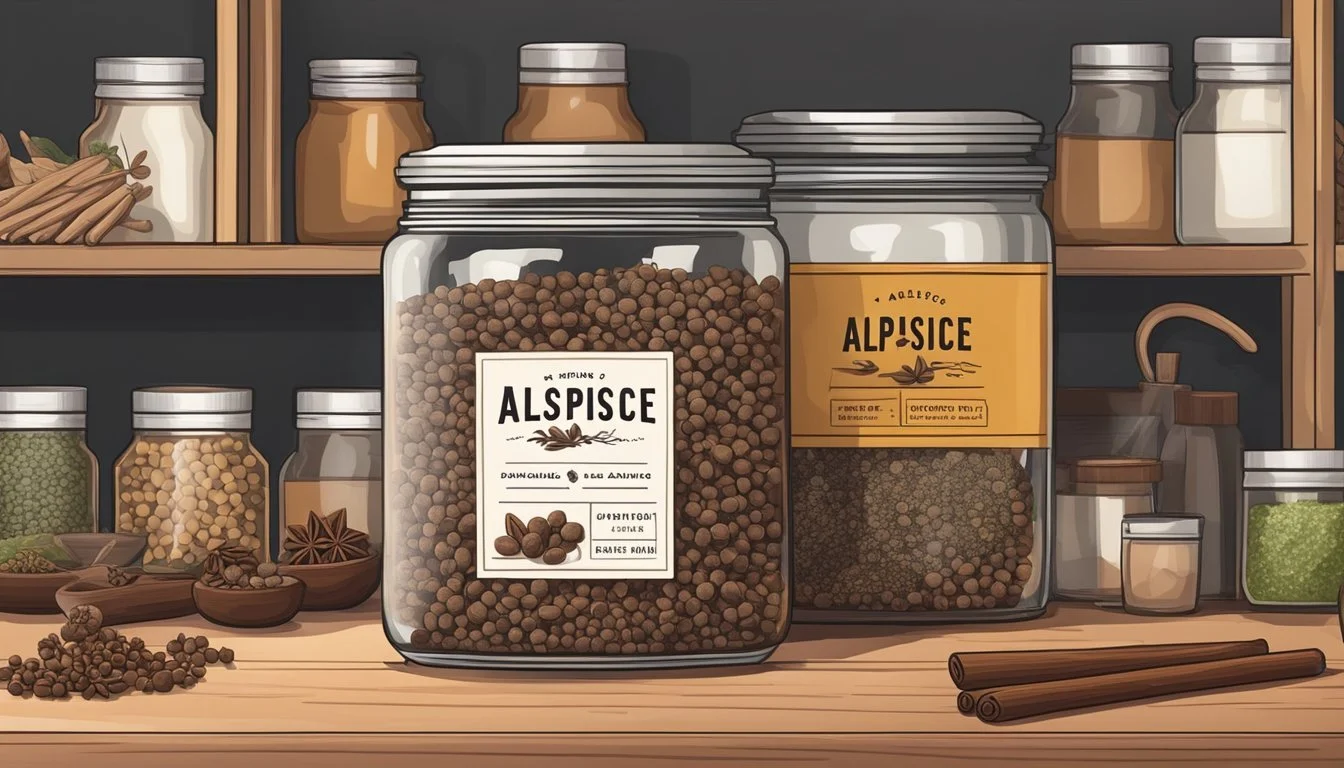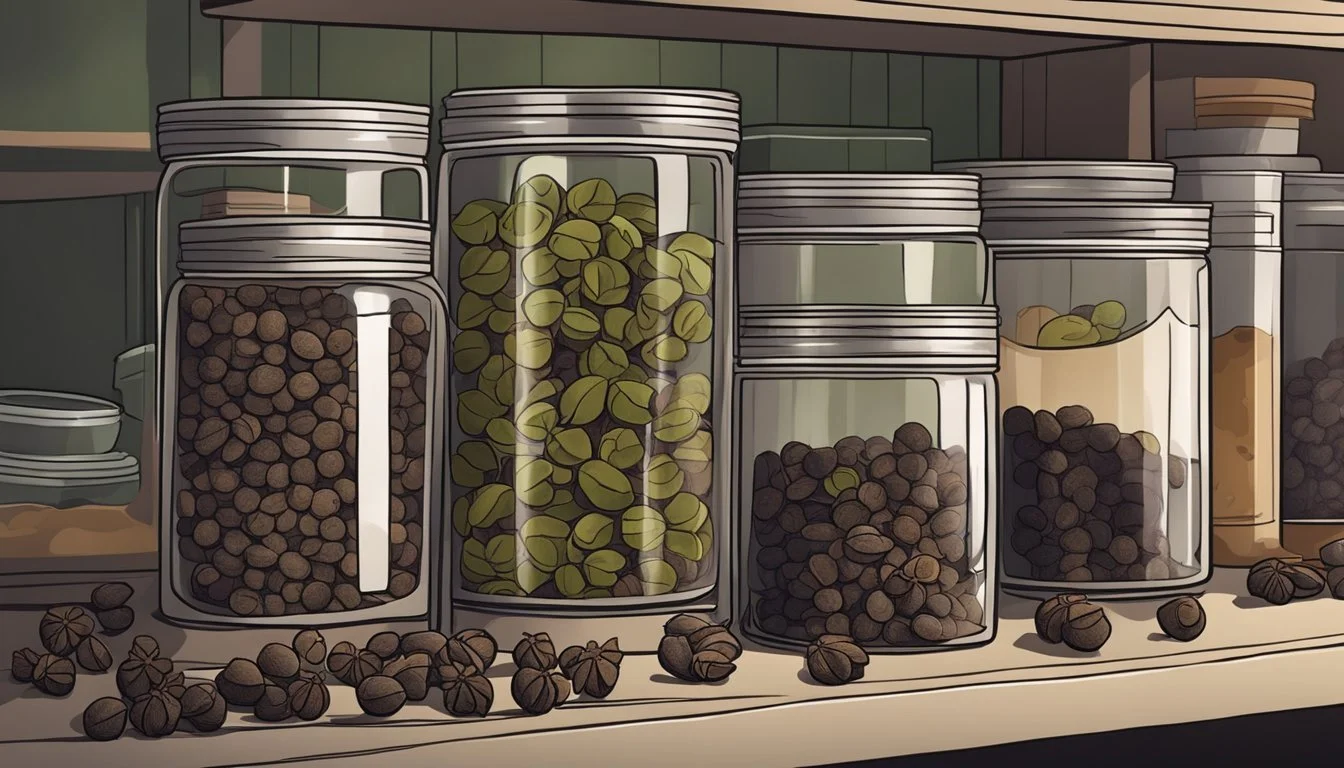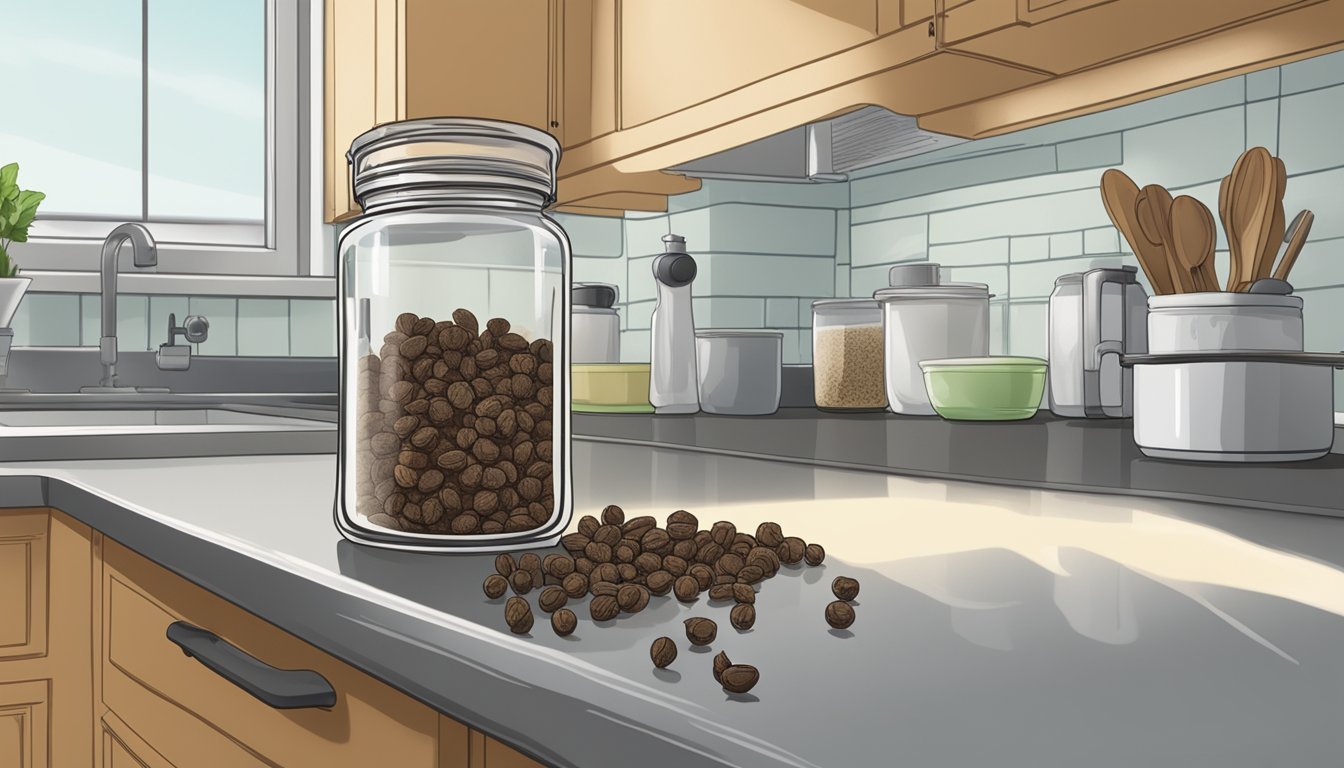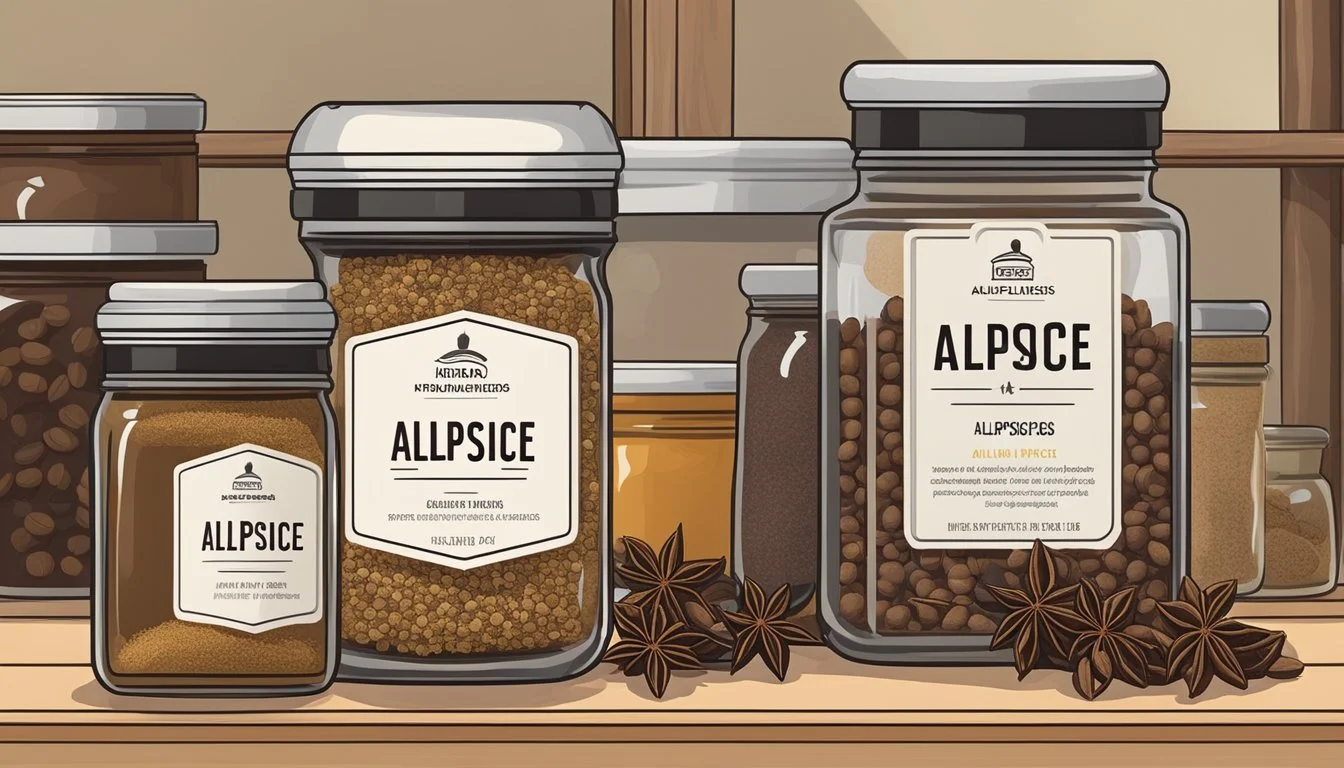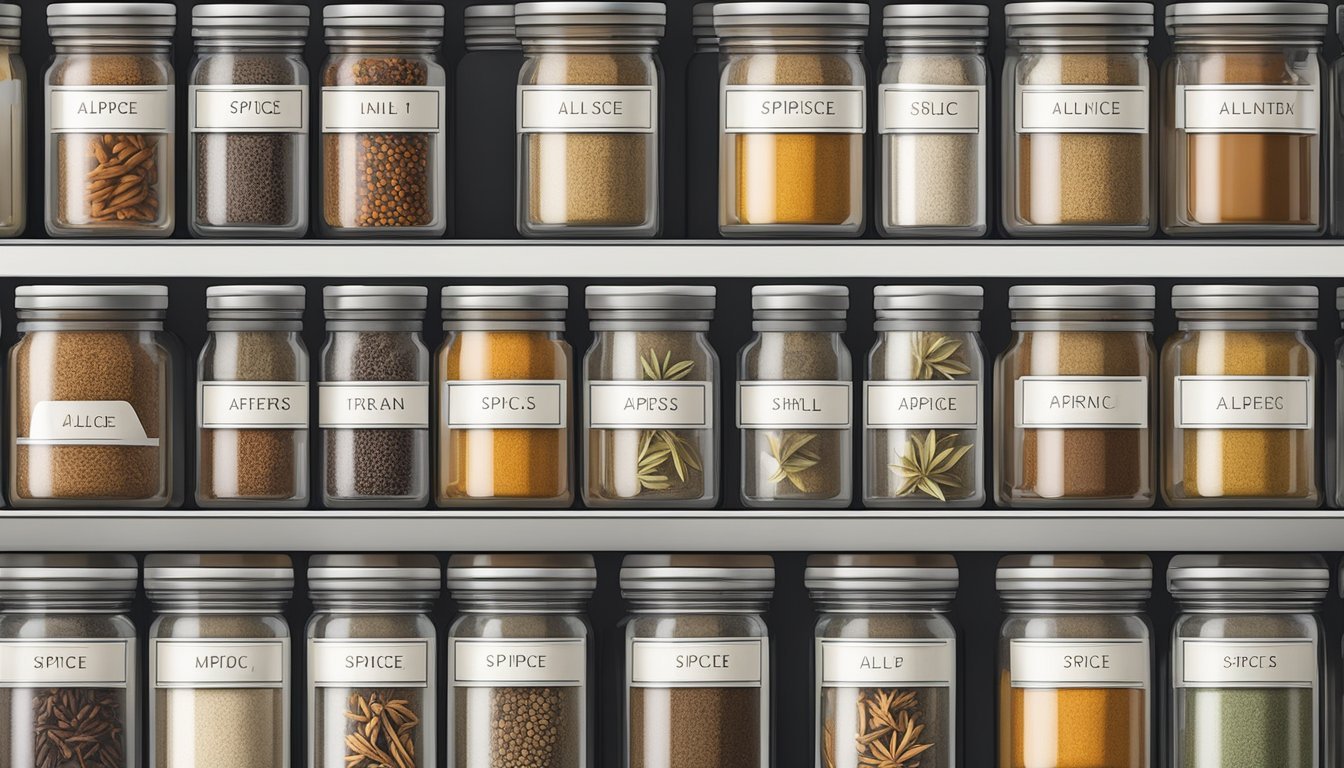Does Allspice Go Bad?
Storage Tips and Shelf Life
Allspice, a versatile spice derived from dried berries, is a staple in many kitchens around the world. With its unique combination of flavors reminiscent of cinnamon, clove, and nutmeg, it enhances a wide range of dishes from curries to baked goods. Yes, allspice can go bad over time, losing its aroma and flavor.
The shelf life of allspice varies depending on its form and storage conditions. Whole allspice berries can last up to five years if kept in a cool, dry place in an airtight container. Ground allspice, on the other hand, tends to lose its potency faster, typically remaining effective for up to two or three years.
Proper storage is crucial to maintaining allspice's quality. Keep it away from moisture, heat, and direct sunlight to ensure it retains its flavor. Regularly checking your spice collection and replacing any that have lost their fragrance can help keep your cooking vibrant and delicious.
Understanding Allspice
Allspice is a versatile spice known for its unique aroma and flavor, often compared to a blend of nutmeg, cinnamon, and cloves. Its applications span culinary and medicinal uses, making it a staple in many kitchens.
Origins and Characteristics
Allspice comes from the dried berries of the Pimenta dioica tree, native to the Caribbean, Central America, and Southern Mexico. The berries are picked when green and then dried to develop their characteristic dark brown color.
The name "allspice" derives from its complex aroma, which resembles a combination of nutmeg, cinnamon, and cloves. This unique spice contains eugenol, contributing to its distinctive scent and mild anesthetic properties.
Fresh, whole allspice berries offer the best flavor, retaining their potency longer than ground allspice.
Culinary Uses
Allspice is used in various dishes, ranging from sweet to savory. Ground allspice is popular in baked goods, such as cakes, cookies, and pastries. It's also a key spice in Caribbean and Middle Eastern cuisine, enhancing the taste of curries, stews, and marinades.
Whole allspice berries can be added to soups, stews, and pickling brines. For best results, they should be added early in the cooking process to allow the flavor to develop fully.
A pinch of ground allspice goes a long way due to its potent flavor, so it's advisable to start with small amounts and adjust to taste.
Comparison to Similar Spices
Allspice often draws comparisons to nutmeg, cinnamon, and cloves due to its complex flavor profile. While each of these spices has its unique qualities, allspice combines their aromas in a single ingredient.
Nutmeg has a warm, sweet-spicy flavor. Cinnamon offers a sweet, woody aroma. Cloves have a strong, pungent scent. Allspice captures elements of each, making it a versatile alternative in recipes calling for these spices.
When substituting allspice, a blend of equal parts cinnamon, cloves, and nutmeg can mimic its flavor to some extent. However, the singular complexity of allspice is unique and difficult to replicate precisely.
Factors Affecting Allspice Longevity
Allspice longevity depends on multiple factors including exposure to elements and inevitable physical and chemical changes. Proper storage is essential to maintain its flavor and aroma over time.
Effects of Exposure to Elements
Exposure to air, heat, light, and moisture significantly affects the longevity of allspice. When allspice comes in contact with air, it can oxidize, leading to a loss of flavor and potency. Heat can accelerate the breakdown of the spice's essential oils, causing it to degrade faster.
Light exposure, particularly UV rays, can also break down the oils and reduce the intensity of the allspice's aroma. Moisture is another critical factor; it can cause clumping, mold growth, and spoilage. To avoid moisture, allspice should be stored in airtight containers in cool, dark places.
Physical and Chemical Changes Over Time
Over time, physical and chemical changes occur in allspice that can affect its quality. Whole allspice berries can last between two to four years if stored properly, while ground allspice typically has a shorter shelf life due to its larger surface area and quicker degradation.
Physical signs that allspice has gone bad include shriveled berries or a grayish tint instead of a rich brown color. Chemically, the loss of essential oils leads to a weaker aroma and flavor. These changes indicate that the allspice is no longer suitable for culinary use and should be replaced. Proper storage and attention to these changes can help maximize its longevity.
Proper Storage Techniques
Storing allspice properly ensures its flavor and potency are maintained for an extended period. Different storage methods are needed for whole spices and ground allspice to achieve the best results.
Ideal Conditions for Whole Spices
Whole allspice should be kept in airtight containers to safeguard against moisture and air exposure.
Store these containers in a cool, dry, and dark place such as a pantry or cupboard. The temperature should remain between 50°F to 70°F (10°C to 21°C). These conditions help preserve their vibrant aroma and flavor.
Placement away from direct sunlight or heat sources is essential. Direct sunlight and heat can accelerate degradation, leading to loss of flavor and quality. Regularly inspect for shriveling or discoloration, as these are signs the allspice may have gone bad.
Best Practices for Ground Allspice
Ground allspice has a shorter shelf life compared to whole allspice. It is crucial to keep ground allspice in airtight containers as well, to prevent exposure to air and moisture.
Like whole spices, store ground allspice in a cool, dry, and dark place. Temperature should be consistent and within the same range of 50°F to 70°F (10°C to 21°C). Avoid placing it near heat sources, which can cause it to lose its potency faster.
Always label containers with the purchase date and check periodically for any loss of aroma. Ground allspice should have a strong scent; if it becomes weak, it may be time to replace it.
Identifying Spoilage
Allspice can lose its potency over time, affecting its flavor and freshness. Key indicators include changes in appearance, smell, and taste.
Visual and Olfactory Indicators
Visual inspection is the first step in identifying spoilage in allspice. Check for any signs of mold on the surface of whole berries or ground spice.
Mold appears as discolored patches, often white or greenish. Discard any spice showing these signs immediately.
Storage conditions can affect the spice's appearance. Whole allspice should retain a dark, consistent color. Similarly, ground allspice should appear uniform without clumping.
Pay attention to the smell. Fresh allspice has a distinct, aromatic fragrance reminiscent of cloves, cinnamon, and nutmeg. If the spice lacks this strong aroma or smells musty, it's likely past its prime.
Taste Assessment
Taste is another reliable method to assess allspice freshness. Fresh allspice should have a robust flavor, marked by hints of cloves, cinnamon, and nutmeg.
To test, take a small amount and crush it. For ground allspice, place a pinch on the tongue.
If the flavor potency is weak or non-existent, the spice has likely deteriorated. A strong, multifaceted flavor profile indicates good freshness.
Avoid using spices with a flat or strange taste as they might not enhance your dishes effectively. Regularly assessing both taste and smell helps ensure your allspice remains a valuable ingredient in your kitchen.
Shelf Life Determination
Properly determining the shelf life of allspice is crucial for maintaining its flavor and aroma. Factors such as whether the spice is whole or ground and how it is stored play significant roles.
Decoding Expiration Labels
Understanding expiration and best-by dates on spice labels can help in assessing allspice quality. Expiration dates often indicate when the spice is no longer safe to use, while best-by dates suggest when the spice will be at its peak flavor.
Typically, ground allspice retains its quality for 2-3 years. Whole allspice berries can maintain their freshness and potency for up to 4 years due to their lower surface area, which reduces oxidation. Consumers should still rely on their senses—such as smell and appearance—to judge the spice's freshness.
Estimating Longevity of Stored Allspices
The storage method dramatically impacts allspice's lifespan. For both ground and whole allspice, keeping them in airtight containers in a cool, dark place extends their usability. Exposure to air, moisture, heat, or light can degrade the spice more rapidly.
Ground allspice typically lasts for up to 3 years when stored properly. Whole allspice can remain potent for up to 4-5 years. Clearly labeling containers with purchase and storage dates can help in tracking their shelf life, ensuring that spices are used while they are still at their best.
Enhancing and Extending Flavor
Enhancing and extending the flavor of allspice involves specific techniques that cater to both its aromatic qualities and its longevity. It's important to use proper methods such as heating and adept processing to maximize the spice's effective lifespan and taste impact.
Activation Through Heating
Heating can significantly elevate the flavor of allspice, activating its essential oils. Toasting the whole berries in a dry skillet over medium heat for a few minutes can release a warm, aromatic scent.
This process of toasting should precede grinding to ensure the spices contribute their fullest flavor to dishes.
Another method involves stirring ground allspice into hot ingredients during cooking. This short burst of heat rapidly unlocks its spicy-sweet essence, seamlessly integrating it into both sweet and savory recipes.
Proper timing and usage of heat can thus dramatically enhance allspice's culinary contributions, ensuring dishes are both fragrant and flavorful.
Processing Methods for Optimal Use
Proper storage and processing of allspice are paramount to extending its flavor. Store whole berries in an airtight container, away from light and heat, to maintain freshness.
Whole allspice berries retain their aroma longer compared to ground form. Grind small quantities as needed using a spice grinder or mortar and pestle.
Freshly ground allspice offers a stronger and more nuanced flavor compared to pre-ground versions. Moreover, processing methods such as freeze-drying can help preserve the spice's aromatic compounds for extended use.
Efficient processing extends flavor longevity, making every dish richer and more vibrant. Through mindful application of these methods, allspice's robust taste and fragrant qualities can be enjoyed much longer.
Alternatives and Substitutes
When allspice is unavailable, various spices and blends can serve as effective substitutes. These alternatives can replicate the flavor profile of allspice or offer a unique twist to your dish.
Similar Spices and Blends
Ground nutmeg and cinnamon sticks are popular alternatives. Ground cinnamon can add warmth to both sweet and savory dishes. Nutmeg offers an earthy depth, making it suitable for recipes ranging from desserts to sausages.
Cloves can be used as a substitute, though their flavor is stronger. It's best to use half the amount of ground cloves than the allspice required.
Blends like Chinese Five-Spice or Pumpkin Pie Spice also work well. Chinese Five-Spice, which contains cinnamon, cloves, and other warm spices, can add a complex flavor. Pumpkin Pie Spice usually includes cinnamon, nutmeg, and cloves, mirroring allspice's profile.
Creating Homemade Allspice Mix
To make a homemade allspice mix, combine equal parts of ground cinnamon, ground cloves, and ground nutmeg. This blend can replicate the balanced flavor of allspice.
For example, to substitute one teaspoon of allspice, mix:
1/3 teaspoon ground cinnamon
1/3 teaspoon ground cloves
1/3 teaspoon ground nutmeg
Adjust the quantities based on personal taste or the specific recipe. This homemade mix ensures you have a versatile substitute that closely mimics the taste of allspice, making it useful in various culinary applications.
Incorporating Allspice in Recipes
Allspice is a versatile seasoning that can enhance both sweet and savory dishes. It pairs well with many flavors, making it a staple in various cuisines and a valuable addition to your pantry.
Sweet Applications
In baking, allspice adds depth and warmth to a range of treats. It's commonly used in classic desserts like pumpkin pie, gingerbread cookies, and apple cakes. Pairing well with spices like cinnamon, nutmeg, and cloves, a pinch of allspice elevates the complexity of these recipes.
For a richer flavor, mix ground allspice with sugar and sprinkle it over cinnamon rolls before baking. Allspice can also be incorporated into muffins and breads, adding a unique twist. To enhance fruit-based desserts, try adding a bit of allspice to crumble toppings or compotes. It brings out the natural sweetness of fruits like apples, pears, and berries.
Savory Creations
Allspice isn't limited to desserts; it’s equally powerful in savory dishes. Incorporate it into meat rubs and marinades for a warm, aromatic flavor that complements beef, chicken, and pork. Adding a small amount to sauces, like a tomato-based sauce, can provide a subtle depth without overwhelming the dish.
In stews and soups, whole allspice berries can be added early in the cooking process to distribute their flavor evenly. Caribbean cuisine, in particular, utilizes allspice in dishes like jerk chicken and curry pastes. For a hearty, complex flavor, try adding ground allspice to your chili or barbecue sauces. Its versatility makes it suitable for a wide variety of savory recipes.
Advanced Storage Solutions
When storing allspice for extended periods, implementing advanced storage techniques can greatly prolong its freshness and potency. Key considerations include dry environments and temperature control.
Long-Term Preservation Methods
Using vacuum-sealed containers is an effective way to preserve allspice for the long term. These containers remove excess air, reducing oxidation and moisture exposure which can degrade the spice.
Glass jars with tight-fitting lids are also recommended. They are impermeable to moisture and help maintain the spice's integrity.
Desiccants like silica gel packs can be added to storage containers to absorb any residual moisture. Maintain a consistent, dry environment as fluctuating humidity levels accelerate spoilage.
Using Refrigeration and Freezing
Refrigeration can slow the degradation of allspice, though it is typically best for ground spices. Store in airtight containers to prevent moisture absorption and odor transfer from other foods.
For the longest preservation, freezing is an option. Whole allspice berries freeze well and retain their flavor if stored in freezer-safe bags or vacuum-sealed pouches.
Label containers with the storage date for easy tracking. Ensure the storage environment in the freezer remains consistent to maximize shelf life.
These methods, when employed correctly, help maintain the potency and quality of allspice over time.

